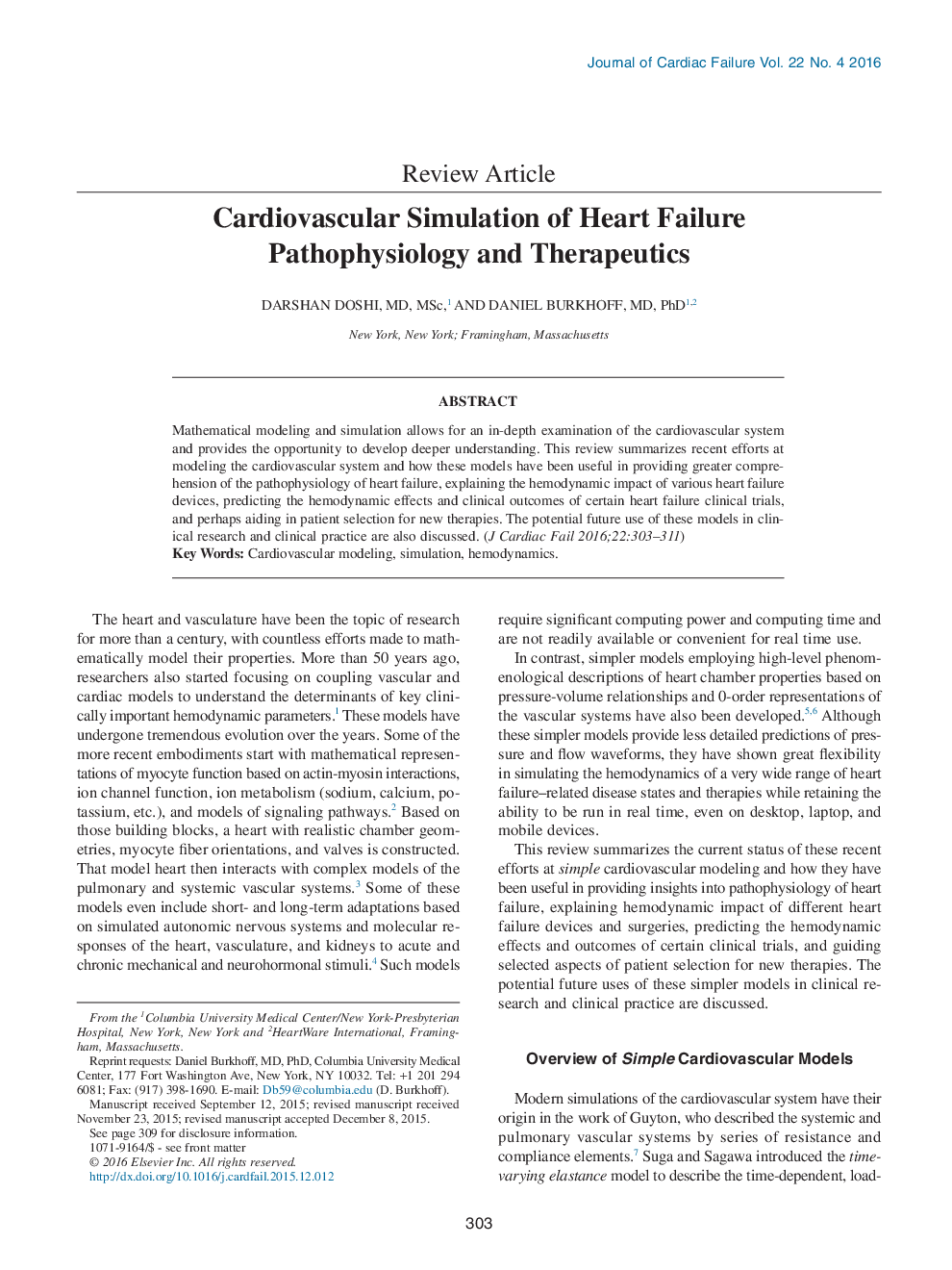| Article ID | Journal | Published Year | Pages | File Type |
|---|---|---|---|---|
| 2958581 | Journal of Cardiac Failure | 2016 | 9 Pages |
•Models of heart and vascular properties have evolved over the past century.•These models have been coupled to yield comprehensive cardiovascular simulations.•Simulations help explain certain aspects of the pathophysiology of heart failure (HF).•Simulations have successfully predicted the effects of certain types of HF therapies.•Further validation may expand the role of simulations to help customize HF therapies.
Mathematical modeling and simulation allows for an in-depth examination of the cardiovascular system and provides the opportunity to develop deeper understanding. This review summarizes recent efforts at modeling the cardiovascular system and how these models have been useful in providing greater comprehension of the pathophysiology of heart failure, explaining the hemodynamic impact of various heart failure devices, predicting the hemodynamic effects and clinical outcomes of certain heart failure clinical trials, and perhaps aiding in patient selection for new therapies. The potential future use of these models in clinical research and clinical practice are also discussed.
